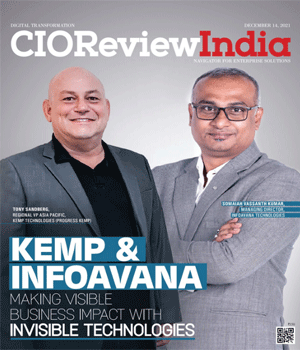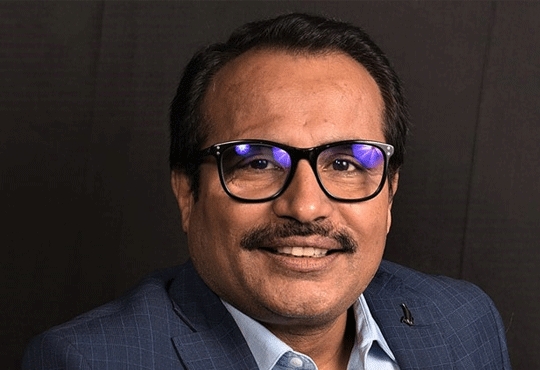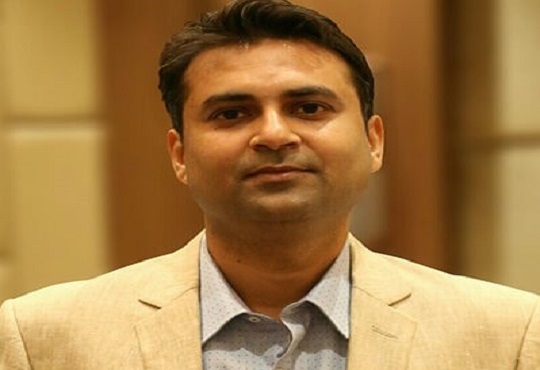
Monetizing the Core Competency
Excerpts from an interaction with Ved Prakash Nirbhya, CIO, Tech Mahindra | Wednesday, 22 July 2020, 01:55 IST
In an interaction with Sudhakar Singh, Editor, CIOReviewIndia, Ved Prakash Nirbhya, CIO, Tech Mahindra shares his views on technologies that are going to be most promising for businesses in the near future, ways to mitigate security risks, how to drive real digital transformation, and more.

Which technologies are helping enterprises sustain during the pandemic? Which technologies do the CIOs need to bet big on in order to grow?
We are in a precarious situation. If we talk about coping with it, the first thing which comes to my mind from technology perspective is the combination of all the remote working technologies. If I had to pinpoint some technologies, those would be cloud, VDI (Virtual Desktop Infrastructure), VPN (Virtual Private Network), and all kinds of Remote Desktop Services. These are the technologies I would put on top. The next thing I would emphasize is security because even if you work from home, the security concerns are obviously there. So, all kinds of security technologies are very critical. The third technology which I believe is quite significant is collaboration technology. It allows employees to engage, communicate with each other and monitor the productivity. Video conferencing platforms have helped the CIOs engage and interact with their teams.
Coming to the second part of the question on the technology we can certainly bet on going forward, I would place cloud pretty much on top because cloud consumption has never increased the way it has in the last three months. Secondly, all the security technologies are going to evolve, which we have to bet on. Then there is AI which is going to be used across all business functions. Lastly, another technology which I am excited about is 5G. It is definitely going to be a very effective technology.
What new measures can be taken by enterprises to mitigate security risk exposure?
You have to see what has changed. Starting from the users to end points to applications, emails, network etc, with work from home, the surface area of attack has increased manyfold. I believe AI will now get more involved in security than it was before. It is going to be a lot more integrated. We need to bring advanced tech protection like end point protection software EDR. If you need security at the network level, you have to have an advanced tech protection that is basically AI driven so that we can monitor what is happening. Thus, AI is going to make all technologies smarter.
"The important thing for successful digital transformation by companies is to focus on the customer. It is about the experience you are giving to the customer and the end to end journey of the customer. If you focus on the customer, their experience, their journey, their need, you are more likely to bring about a tangible change."
Monitoring with advanced tools to take action quickly is going to be the new norm going forward. Zero trust has also been a fundamental change in the way we are viewing potential threat and allowing access. Rather than going with the concept of blacklist, we are going with the concept of whitelist. That is how we are going to approach security now.
Several concerns have been deterring enterprises from adopting cloud or migrating to cloud. How is the attitude and approach towards cloud adoption changing?
The concerns from customers around the world are two-fold. One is the regulatory concern wherein owing to the local regulation, you are not allowed to actually put your data outside your premises. Secondly, as cloud is becoming an extended data center, there are data security concerns because even though the cloud service provider can secure the platform, the onus of securing the application you are running on it is a shared responsibility.
So, what has changed fundamentally? Why still people want to adopt cloud?
The first advantage is the flexibility it gives us. Usually, if you are going to start something new, you have to bring together the whole infrastructure and set it up for being operational which takes months. Whereas on cloud, if you want to try something quick, you can be up and running in half an hour.
The second dimension is scalability. If you are running a seasonal application whose load goes up in the peak season, in case of hosting it on premise, it is a challenge, but on cloud, you can tap on and tap off as per the need. You can even manage the flexibility in case the load is more in the day time and less in the night time. So, obviously it gives a lot of flexibility to people and that is encouraging them to adopt cloud.
Businesses are now compelled to go digital as fast as possible. But in many cases it has been seen that the business objective behind the initiative is not fulfilled. How do enterprises need to strategize for real digital transformation?
Let’s look at what will work and what won’t for digital transformation. What are you focusing on for your digital transformation? Are you running it like a technology change? It is not about changing the technology. The important thing for successful digital transformation by companies is to focus on the customer. It is about the experience you are giving to the customer and the end to end journey of the customer. If you focus on the customer, their experience, their journey, their need, you are more likely to bring about a tangible change as compared to a technology change. A technology change does not necessarily bring a real change.
It is not that technology is not important but it is a much wider domain. You have to use a lot of tools on cloud security, AI, analytics, etc; that side is obviously there because that will make it easier to manage the whole process. But it is also about the architecture. When you are providing a solution to the customer, are you having the right flexible architecture which allows changing things in steps and stages and has the option to roll back if needed? And how do you deliver those solutions? There comes the methodology. You have to use agile methodology; you have to look at the business requirements and align your solutions accordingly. So, it is not just about technology and tools, but also about the methodology and architecture.
Coming to the third dimension, are you looking at the transformation as a business initiative or an IT initiative? It has to be a business driven transformation. You should involve the customers and partners throughout the transformation journey. So, understanding its diverse nature and the full impact is very important. Next thing to factor in is the speed. In some industries, it takes years to transform. That should not happen and the transformation must be done in a timely manner. Last but not the least is unrealistic expectation in terms of RoI. The focus should be on products. One should always look to evolve and upgrade the product or the service. Hence, it is combination of all these factors which makes a digital transformation successful.
Enterprises today are striving to use their resources to focus on their core competency. And as a result, there is an increase in demand for IT services. In what ways do you think IT service providers should evolve? How are you driving this change for Tech Mahindra?
The demand is certainly going to go up. The pandemic has accelerated digital transformation faster than anything. However, companies cannot do everything themselves and they are looking for a partner to bring about this change. When we partner with someone, many times we have seen that people don’t know where to start, how much to do and where to focus. We look at the business and analyse it. Some part of business need not be changed today but may have to run better with more agility, speed of operation or efficiency. Then there might be parts of business that has to be changed. A right partner like us looks at the business and suggests which part of the business needs to be changed so that it will give maximum efficiency or productivity or result. Another aspect is the growth part which is about starting new service line or offering. We help by ensuring that their resources are deployed in the best possible manner.
Some of our offerings to keep up with changing dynamics are: Solution for Secure Remote Working - based on our Workstation as a Service and virtual office solutions; our Physical solution that enables every physical entity to transform its business into a digital world and deliver an engagement experience; and enabling businesses to offer the solutions as a service, using our cloud infrastructure and apps solutions.
We are helping businesses monetize their core competency. Our focus is on ensuring their horizontal as well as vertical growth by enabling them to run their business in a better way.
CIO Viewpoint
The Constantly Evolving Technology Landscape in...
By Janifha Evangeline
Navigating the Digitalization of Mining Industry
By Janifha Evangeline
How To Achieve An Effective Digital Transformation
By Yogendra Singh, Head-IT/SAP, Barista Coffee Company Limited
CXO Insights
No-code platforms: Enterprise-wide Adoption...
By Rahul Murthi, Director at Acies
Unleashing the Potential of IT in Engineering...
By Gyan Pandey, Head - Digital/CDO, Voltas
Low Code and Artificial Intelligence - The...


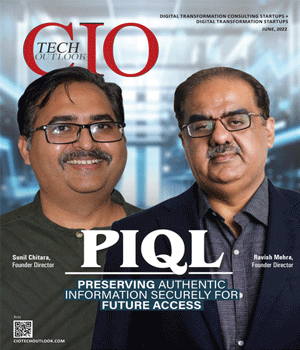
.jpg)
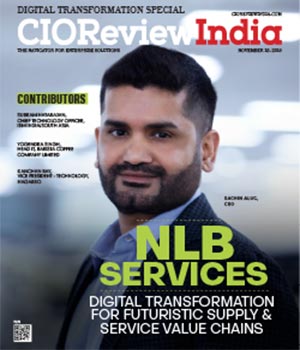
.jpg)

